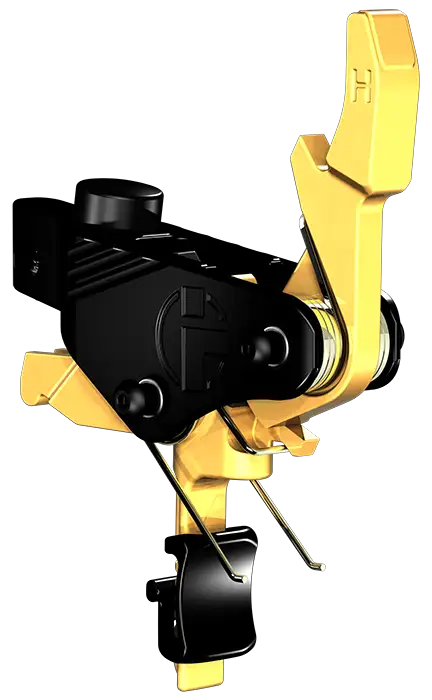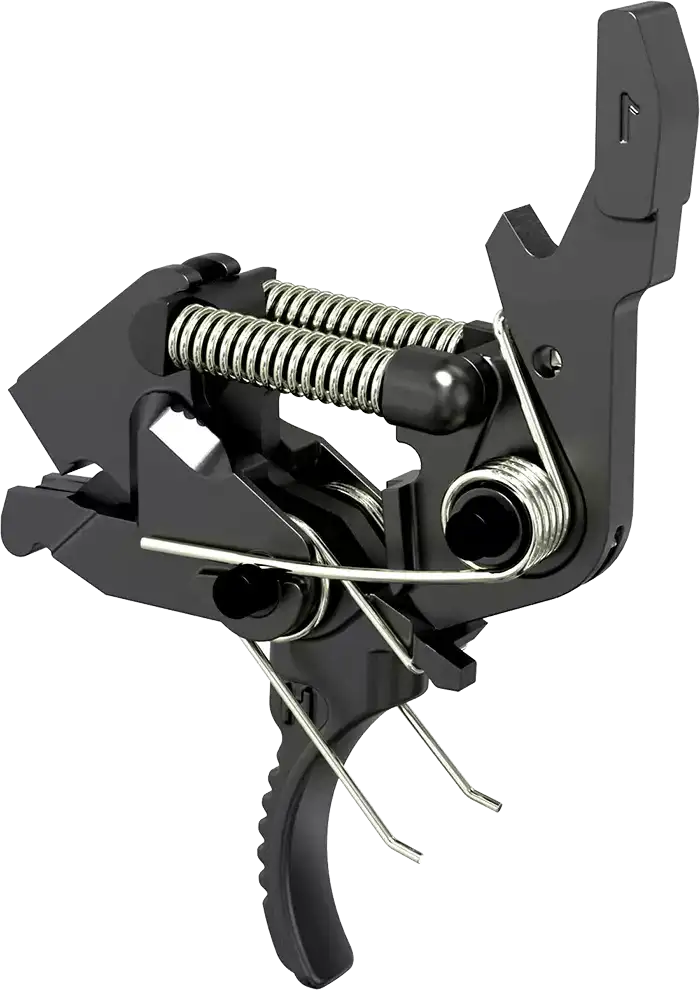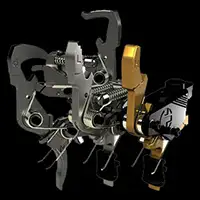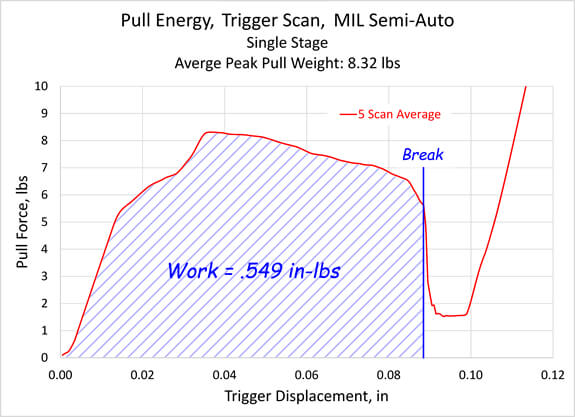HIPERFIRE triggers are novel by design. The unique look follows the definition of functional design, “it looks that way for what it does.”
I have a confession, I don’t shoot, well at least rarely. I am an engineer by training and I think like one. I am rather analytical, but I’m also very creative and have a good imagination. When I designed that trigger for the .50 caliber semi-auto rifle, I knew what the mechanical requirements had to be to strike and dimple hard primers for 100 % reliable ignition as well as have a light, tactical touch for long range marksmanship. I designed the trigger in 2003. In 2011 I modified it for the AR-15 and started HIPERFIRE. The rest is history.
The HIPERTOUCH Genesis was originally sold in 2011 as the 24 SP: 2-4 lbs of adjustable trigger weight employing three different toggle springs; SP for small-pin installation, not for large-pin COLT version lowers. I packaged the first 100 “production” run of those triggers myself from individually machined parts. In 2012 they sold in larger volumes, made from machined, investment-cast parts and renamed the HIPERTOUCH 24.
At SHOT SHOW 2013 a few people felt the trigger and made some suggestions, like “reduce the creep!” Later in 2012 I was able to reduce the creep without affecting safety. And, a friend asked if I ever thought of adding a shoe. I asked, “What’s a shoe.” Hmm, never thought of that. Well, after some thought, design, and stress analysis I decided the the shoe would be red and made from plastic! Those thoughts resulted in two more triggers.
In 2013 at the Rock Castle Pro Am 3-Gun competition I introduced the HIPERTOUCH 24E (elite) and the 24C (competition). The latter had that red shoe thingy. Friday a.m. when competitors were scouting out the tents they unanimously commented privately to their friends something along these lines, “Another trigger company selling a gimmick [the red shoe].” A few purchased based on the feel experienced during trial pulls on some table demo lowers.
Well, after the morning stages, there was no more talk about the gimmicky red shoe, but, “Where’s that trigger.” The buzz had started all right. I sold out of the stock I brought with me. Since then, the story has not changed. In fact, I’ve had many people approach me to say that the gimmicky red shoe was genius. That red shoe changed 3-gun. Yes, red sells. But, for me the engineer, “It looks like what it does.” What does it do? If spreads the applied trigger force over a larger area on the finger than without it. Translation: same pull force, more area, means less felt pressure. The trigger is more responsive. Instead of pressing a dent in your trigger finger’s flesh, the trigger moves with seemingly much less effort.
I don’t know if any of this makes sense to you. We all have our own way of describing phenomena. I’ve linked below some early reviews of mostly triggers. Read how reviewers apply their analytics. Said in different ways, it boils down: WOW!
. . .
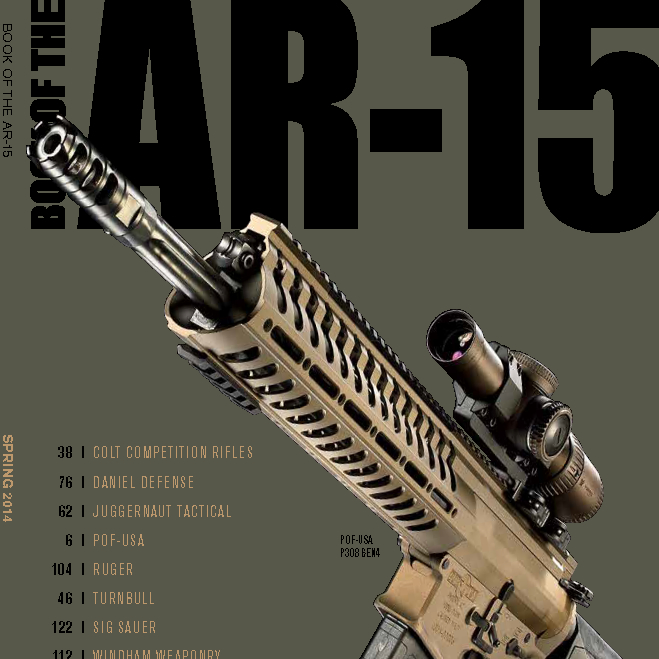
. . .
2014 Genesis Elite Competition FOUR GUYS GUNS Article
2014 Competition SpartanTC81 Reviews Video
2014 Elite 8541 Tactical Article
2014 Competition WE LIKE SHOOTING Video Article
2014 Competition 3 GUN NATION Article
2014 Adams Arms COR Rifle DEFENSE REVIEW Video
2014 Ghost Gun Pistol Build SpartanTC Reviews Article
2014 Competition Genesis Elite BOOK OF THE AR-15 Article
2014 Competition TX Arms Article
2014 AR15 .22 LR Build MAJOR PANDEMIC Article
2014 HIPERSHOE Triggers MAJOR PANDEMIC Article
2015 Genesis JUNIOR SHOOTERS Article
2015 EDT LOADOUT ROOM Article
2015 Genesis GEAR REPORT Article
2015 Elite GEAR REPORT Article
2015 EDT PATROL TACTICAL Video
2015 Competition Lena Miculek Video
2015 Reflex GEAR REPORT Article
2015 Competition GEAR REPORT Article
2015 Custom 300 Blackout MAJOR PANDEMIC Article
2015 Boutique BLACK RIFLES SMALL ARMS REVIEW PART 1 Article
2015 Boutique BLACK RIFLES SMALL ARMS REVIEW PART 2 Article
2015 PRIVATE MILITARY CONTRACTOR Article
2015 HIPERTOUCH Triggers RANGE HOT Article
2015 ECLipse GUNS & AMMO Article
2015 ECLipse DEFENSE REVIEW Article
2015 Elite MAJOR PANDEMIC Article
2015 EDT HG DM MAJOR PANDEMIC Article
2015 ECLipse DM MAJOR PANDEMIC Article
2015 Best AR Triggers OUTDOOR HUB Article
2016 EDT DM Spotter Up Article
2016 Competition Lena Miculek’s Take Video
2016 EDT DM FIREARMS INSIDER Article
2017 Eclipse Spotter Up Article
2017 ECLipse Reflex PEW PEW TACTICAL Article
2018 Elite LOADOUT ROOM Article
2018 Best AR-15 Trigger GEAR-REPORT Article
2019 HIPERTOUCH Installation PEW PEW TACTICAL Article
2019 How-To AR-15 Lower Build PEW PEW TACTICAL Article
2023 Competition (update) GUN MAN Article
HIPERGRIP REALISTIC PREPAREDNESS Article
EDT HG REALISTIC PREPAREDNESS Article


